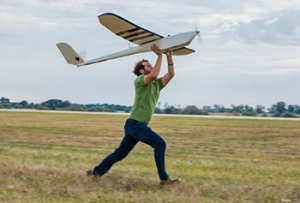
You know Eddie the Eagle. The fearless British Olympic ski jumper. With only 2 years worth of experience a man who competed against others who had been jumping since childhood. Looked down upon by the horrid British toffs who still control skiing in the country.
Though he finished in last place at the Calgary Olympics, Eddie was the peoples favourite. Why? Because against all odds he trained and won a place to compete in the Olympics. Over the course of his career, Eddie fractured his skull twice and broke his jaw, collarbone, ribs, knee, fingers, thumbs, toes, back and neck. He lived hand to mouth, saving all his money for training. Eddie embodied the Olympic adage:
“The most important thing in the Olympic Games is not winning but taking part; the essential thing in life is not conquering but fighting well.”
 It’s easy to see why surveying and mapping professionals have taken such a keen interest in unmanned aerial vehicle (UAV) technology. Gathering info from the sky has been an approach that’s been utilized for a long time now, but the costs associated with traditional manned aircraft makes the endeavor extremely expensive. UAVs offer a cost effective alternative with far more flexibility in terms of being able to get into the air quickly and without as much logistical support.
It’s easy to see why surveying and mapping professionals have taken such a keen interest in unmanned aerial vehicle (UAV) technology. Gathering info from the sky has been an approach that’s been utilized for a long time now, but the costs associated with traditional manned aircraft makes the endeavor extremely expensive. UAVs offer a cost effective alternative with far more flexibility in terms of being able to get into the air quickly and without as much logistical support.
What’s more, UAVs can improve data collection accuracy and efficiency, optimize a workflow while also enabling the production of cost effective turnkey DSM’s and orthos whenever they’re needed. Simply put, UAVs make it far easier to gather the info needed to create maps by reducing costs and simplifying the image-capturing process.







